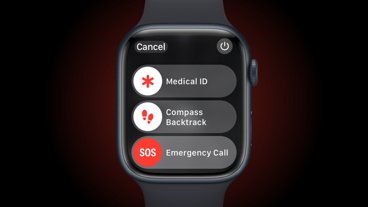Nick Volosin, director of technical services at Kaweah Health Care District in Visalia, Calif., told Network World that he bought three iPads for testing, and plans to implement more than 100 at the facility in the next two months. Various patient monitoring programs will be accessed through Citrix virtual desktop and application delivery software. Using the Citrix Receiver, the hospital will be able to have its workers access desktop applications without writing proprietary software for the iPad.
The iPads will be distributed to home health care and hospice workers, nurses, dietitians and pharmacists. Because tight supply has forced Apple to turn down volume orders, the hospital had to work with Apple directly to make such a large purchase.
Volosin told author Jon Brodkin that the iPad and its 10-hour battery life will replace a laptop for many employees, particularly because it will eliminate the need to charge multiple times throughout the day, and it doesn't need to be turned on and off. In addition to patient-related services, employees will also be able to use the device to do traditional office tasks like check their e-mail.
Another selling point for the iPad: the price. Starting at $500 for the 16GB Wi-Fi model, Volosin reportedly said that it is a more affordable option when compared to a traditional touchscreen tablet, which can cost as much as $3,000.
In addition to Volosin's three test units, about 20 doctors have purchased their own iPads to use at the office. One kidney specialist said the device has made him more efficient and also improved patient safety.
Many hospitals have eyed Apple's iPad since the device was first announced earlier this year. Some health care workers believe tablet computers help doctors and nurses spend more time with patients. One San Francisco program dubbed "Destination Bedside" uses tablet computers to provide X-rays, charts, prescriptions and notes.
In February, one study found that one in five physicians intended to buy an iPad, just days after it was announced. Epocrates Inc.'s survey of more than 350 clinicians found that 9 percent would buy an iPad when it became available, while another 13 percent intend to buy one in the first year. Another 38 percent said they were interested in the iPad, but wanted more information before they would decide whether or not to purchase.
 Katie Marsal
Katie Marsal






-m.jpg)






 Malcolm Owen
Malcolm Owen
 William Gallagher
William Gallagher

 Wesley Hilliard
Wesley Hilliard



 Christine McKee
Christine McKee




-m.jpg)




72 Comments
The biomedical field is one of the areas where the iPad portability can make a significant difference. One of the model discussed in the article combines a Citrix server-iPad ecosystem to capitalize on MS-centric applications already developed in the medical field. This need not be the case though. I hope more native Apps will be developed as well as a more robust Mac server.
Add to this the ability to "expand" images would also be very useful. I wish the magnification could be almost infinite but it seems from my testing of the iPad that Apple has placed a maximum of the degree of "zoom in". This is actually very critical when examining biomedical images to find cancerous cells for example.
Because of the larger screen, it would be possible to actually share the findings with the patient or interested parties.
CGC
The biomedical field is one of the areas where the iPad can make a significant difference,
I agree, it is a massive market for Apple.
A California hospital plans to distribute more than 100 Apple iPads among its health care workers to allow them look at X-ray images, EKG results and more on the portable touchscreen device, according to a new report.
... Various patient monitoring programs will be accessed through Citrix virtual desktop and application delivery software. Using the Citrix Receiver, the hospital will be able to have its workers access desktop applications without writing proprietary software for the iPad.
A good first step, but I imagine it won't be long before they realize that the costs of writing "proprietary software" are outweighed by the advantages. I think the iPad is going to be huge in health care.
The biomedical field is one of the areas where the iPad can make a significant difference,
Or - one of the 'first' areas...
I can see it as perfect for any place where you see 'officials' carrying any kind of clip board or where some kind of hand-held assistant may be utilized. Hotels, restaurants and hospitality management, building site management and architects, warehousing inventory, tour guide-ing and art galleries... Nothing like the scope of the general medical field but nonetheless.
For posts about how hospitals should use Flash for x-rays and diagnostic charts...and how the iPad is clearly a sub-standard mobile touch screen pad because it lacks the ability to run Flash for Medical Emergencies - which Adobe will provide export for from Flash CS19 - due sometime in 2025.